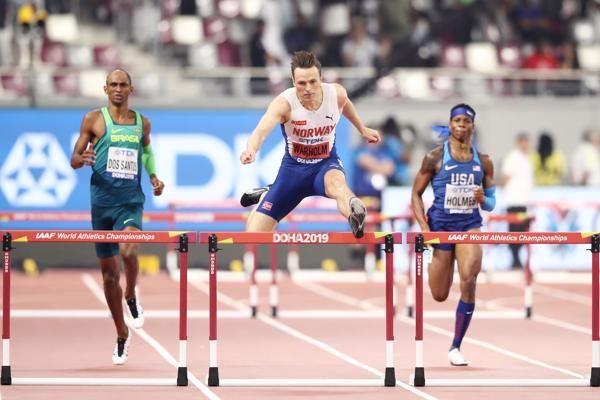At the World Athletics Championships, one of the most striking distinctions lies in the men’s 110-meter hurdles and the women’s 100-meter hurdles events. While both races test speed, agility, and technique over barriers, the difference in distance has long prompted questions from fans and aspiring athletes alike. In this article, we explore the historical, physiological, and regulatory factors that have shaped why men run 110 meters over hurdles, whereas women compete over 100 meters, uncovering the reasoning behind this unique split in track and field’s premier competition.
The Historical Origins Behind the Distance Difference in Men’s and Women’s Hurdles
In the early 20th century, hurdling events began taking shape with distinct standards for men and women. The men’s 110m hurdles trace back to the imperial measurement system and the British tradition of the 120-yard hurdles, which was standardized once track and field events became formalized at the international level. Meanwhile, women’s hurdling initially started at shorter distances, reflecting contemporary beliefs about female athletic capabilities and endurance. These notions influenced the establishment of a 100m hurdles race for women, which became an official event by the 1969 European Athletics Championships, gradually gaining acceptance globally.
Several factors contributed to the distance discrepancy:
- The original imperial distances for men set a precedent difficult to alter.
- Early hurdles height and spacing standards differed between genders, aligning with perceived physiological differences.
- Social attitudes during the early to mid-1900s limited women’s participation in longer or more physically demanding events.
| Event | Distance | Hurdle Height | Standardization Year |
|---|---|---|---|
| Men’s Hurdles | 110 meters | 1.067 meters (42 inches) | 1932 |
| Women’s Hurdles | 100 meters | 0.838 meters (33 inches) | 1969 |
Understanding Physiological Factors Influencing Sprint Hurdle Standards
When analyzing the disparity in hurdle distances between men’s and women’s events, key physiological differences come to the forefront. Men’s average stride length and overall height typically exceed those of women, which directly influences hurdle spacing and race distance. The 110m hurdles for men allow for optimal stride patterns-usually three strides between each hurdle-while the 100m hurdles for women accommodate their physiological traits by adjusting both hurdle height and race distance. This nuanced calibration ensures athletes maintain peak rhythm and speed without compromising safety or technique.
Several physiological factors underpin these standards:
- Muscle composition: Men generally possess greater fast-twitch muscle fiber density, facilitating explosive power vital for clearing higher and more spaced hurdles.
- Leg length: Longer legs permit extended strides, supporting the 110m distance where hurdle spacing exceeds that in women’s races.
- Height differences: Adjusting hurdle heights (1.067m for men vs. 0.838m for women) corresponds with average male and female statures, optimizing clearance efficiency.
| Factor | Men’s Average | Women’s Average |
|---|---|---|
| Height | 1.80 m (5’11”) | 1.65 m (5’5″) |
| Stride Length (avg.) | 2.5 m | 2.2 m |
| Hurdle Height | 1.067 m | 0.838 m |
Recommendations for Future Considerations in Standardizing Hurdle Events
As athletics continues to evolve with greater emphasis on equality and precision, reconsidering the disparity between men’s and women’s hurdle distances could foster a more unified approach. Standardization efforts might explore aligning hurdle race lengths while respecting physiological differences, such as adjusting hurdle height or spacing rather than race distance. This shift would not only simplify event formats but could also enhance global spectator engagement by enabling easier comparisons and fostering a sense of parity across genders.
Key factors for future deliberations include:
- Reassessing hurdle spacing intervals to maintain athlete safety and performance integrity.
- Evaluating historical data to determine optimal race lengths that balance tradition and modern athletic capabilities.
- Engaging with athlete feedback to prioritize comfort and competitive fairness.
| Event | Distance (meters) | Standard Hurdle Height (meters) |
|---|---|---|
| Men’s Sprint Hurdles | 110 | 1.067 |
| Women’s Sprint Hurdles | 100 | 0.838 |
| Potential Unified Event | 105* | Varied Heights |
*Hypothetical compromise distance to balance tradition and fairness
In Summary
In conclusion, the distinction between the men’s 110m hurdles and the women’s 100m hurdles at the World Athletics Championships is rooted in a combination of historical precedent, physiological considerations, and the evolution of the sport. While debates about distance and hurdle height continue, these events remain a testament to the athletes’ speed, agility, and technical skill. Understanding the origins and reasoning behind these differences provides greater appreciation for the unique challenges each event presents on the world stage.

